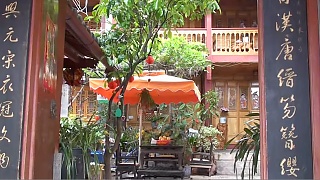
|
With MiaoMiao ...
Zhangjiang Science City, located in the Pudong district of Shanghai, is a major hub for scientific innovation and research in China. Often referred to as the "Silicon Valley of China," Zhangjiang Science City has been a focal point for the development of high-tech industries, particularly in the fields of biotechnology, information technology, and advanced manufacturing.
Key Features and Developments:
Research and Development Hub:
Zhangjiang Science City hosts numerous research institutions, universities, and corporate R&D centers. It's home to the Zhangjiang National Innovation Demonstration Zone, which plays a critical role in fostering technological innovation.
The area is known for its strong focus on life sciences, with many pharmaceutical companies and biotech firms operating there, including multinational corporations like Roche and Novartis.
Tech Startups and Incubators:
The region has a thriving startup ecosystem, supported by various incubators and accelerators. This makes it an attractive destination for tech entrepreneurs and innovators.
The Shanghai Zhangjiang Hi-Tech Park, within the science city, is one of China's most prominent technology parks, providing resources and infrastructure for startups.
International Collaboration:
Zhangjiang Science City emphasizes international collaboration, with numerous foreign enterprises establishing their R&D centers there. The area facilitates joint ventures and partnerships between Chinese and global companies.
The establishment of free trade zones and favorable policies has further encouraged international investment and collaboration.
Smart City Development:
As part of the broader Shanghai initiative, Zhangjiang is being developed into a "smart city" with advanced infrastructure for communications, transport, and urban living.
The integration of AI, big data, and IoT technologies into the city’s infrastructure is a key aspect of its development, making it a model for future urban areas.
Education and Talent:
The science city benefits from proximity to top-tier universities and research institutions, which supply a steady stream of talent in various scientific and engineering disciplines.
Efforts are made to attract and retain international talent, offering competitive incentives and a conducive environment for innovation.
Government Support:
The Chinese government has prioritized Zhangjiang as a key area for the country’s strategic technology development. Policies are in place to support research, attract investment, and encourage innovation.
Significant investments have been made in infrastructure, including transport links that connect Zhangjiang to other parts of Shanghai and beyond, enhancing its accessibility and appeal as a business location.
Future Prospects:
Zhangjiang Science City is poised to continue its growth as a global leader in science and technology. With ongoing investments and a focus on high-tech industries, it is expected to play a significant role in China's ambitions to become a world leader in innovation and technology by the mid-21st century. The combination of government support, international collaboration, and a strong innovation ecosystem makes Zhangjiang Science City a critical component of Shanghai's, and indeed China's, future development strategy.
|

 Autumn in TaChuan, AnHui province
Autumn in TaChuan, AnHui province





